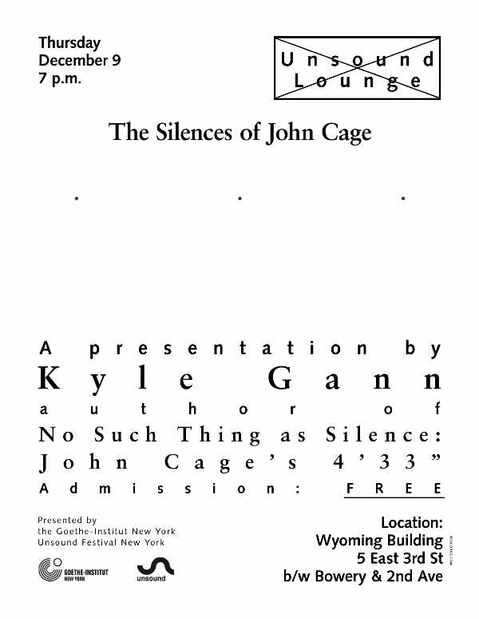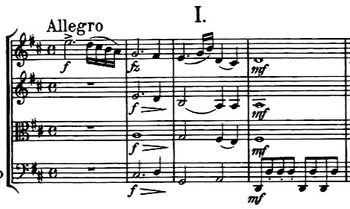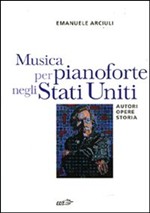One of the things I love about Richard Taruskin’s Oxford History of Western Music is its emphasis on how an evolving public narrative privileges some composers and marginalizes others. For instance, he writes about how when Ligeti came to Darmstadt, because he was Hungarian he had to rewrite (with Erno Lendvai’s help) Bartok’s reputation from that of a collector of folk music to that of a formalist using golden sections and axis systems. Communist Hungary needed to see Bartok as a champion of he proletariat (Lendvai’s decadent-formalist book got him fired from Budapest Conservatory), but at 1950s Darmstadt, a quoter of folk music would have been merely pitiable. Ligeti needed to refurbish Bartok’s narrative in order to polish up his own legacy, even to make it palatable. Over and over Taruskin shows how the narrative, created piece-by-piece by composers and musicologists and writers and savants, takes on a life of its own. Phenomena consonant with the narrative enter public consciousness; those that dissonate, no matter how valuable in their own right, fall by the wayside.
I’ve finally gotten around to buying and reading Howard Pollack’s book on John Alden Carpenter, which I’d fondled in bookstores for years. It’s a succinct, engaging, curiosity-satisfying piece of scholarship. Curiously heavy on the critical reception of Carpenter – so much so, in fact, that he spends considerable space on a 1986 review I wrote for Fanfare magazine of Carpenter’s piano music. Carpenter is a composer whose tragedy was to watch his reputation soar and then to plummet in later life, to the point of becoming almost a figure of fun to younger composers.
Yet Carpenter remains a famous name. When I was young, he was one of the first “modern” composers I heard of. And what pieces did I read about? Skyscrapers and Krazy Kat. Why? Because Carpenter lived in Chicago in the jazzy 1920s. He was part of the age of skyscrapers and newspaper comics and heavy machinery, and his music betokened the point at which exploding urbanization still seemed sexy. Skyscrapers and Krazy Kat fit his narrative. He also wrote a tone poem called Sea Drift that Pollack and others consider a better piece. But Sea Drift? Number one, Chicago is a long way from any sea. Two, that’s a Walt Whitman reference, and Whitman was an East-Coaster, and besides, Sea Drift is Vaughan Williams and Delius territory, part of the maudlin British transatlantic experience, not material for the jazzy and urbane Carpenter, wealthy heir to a manufacturing fortune. Sea Drift may be a better-written piece than Krazy Kat (not so I’m convinced of that, actually), but it had never entered my consciousness, even though I’ve had the Abany Symphony recording since it was on vinyl. It didn’t fit my narrative of Carpenter. The fact that he wrote a sentimental tone poem on Whitman is a cognitive dissonance with my image of him, magnum opus notwithstanding.
(For the record, and before I get to my main point, going deeper into Carpenters’s music has convinced me that he is rather woefully underrecognized. He never should have written that damn Perambulator piece, it trivialized his reputation. It’s true that even his symphonies have a kind of unfocussed, balletic quality that sounds like film music today, but the music is always graceful and “debonair” – to repeat the aptest term it habitually elicited. And fairly often, as particularly in his 1927 String Quartet, it achieves an enchanting vigor and rhythmic surprise. Look up that string quartet, it’s a forgotten classic.)
To be absorbed into the public dialogue requires a narrative. To not project a narrative is to have no career at all. Only a few dozen musicians, or if you’re lucky a few hundred, will ever take a close enough look to see what you’ve actually accomplished. The rest of the musical public will inevitably receive a caricature of you, because that’s all they have time or attention or insight for. That’s the veil of Maya, of illusion, the conventional wisdom that we can look down our nose at but whose influence we can never escape. The public can take in Carpenter = Krazy Kat because it makes sense, but Krazy Kat plus Sea Drift is too complex, too nuanced, for even the peripheral imagination of a scholar like myself, and only now have I gotten around to more than a peripheral look. I ignored Sea Drift as an almost painful reality, because it took some effort to factor into the image of a composer I didn’t yet have the incentive to focus on.
Common sense and self-interest would dictate that composers would play to their narrative, but most of us shrink from it in disdain. Take me. I’ve made a big deal about microtonality, and I find myself almost universally described as a microtonal composer, even though some 2/3 to 3/4 of my output so far is in the good old 12-tone scale. Custer and Sitting Bull is probably my best-known piece, or the piece with which I’m most associated. And for good reason – it combines microtonality with my Texas roots and my interest in American Indian music. It fuses well with my bull-in-a-china-shop personality, my 6’2″ stature, and my southern accent. Were I a short, Jewish New Yorker, this piece would never have gotten off the ground. Had I been attentive to my narrative, I would have followed it up with, say, a microtonal opera about Jesse James, or a song cycle on the letters of Calamity Jane (which Ben Johnston actually beat me to). I could have become the “microtonal wild-west-history composer.” Instead, I wrote a chamber quartet called Kierkegaard, Walking, with 12 pitches to the octave. I think it’s one of my best works. But what was I, a Texan transplanted to New York, doing having a fascination with Kierkegaard? How much of my life has taken place in Denmark? Four days. Kierkegaard, Walking may be my Sea Drift, a piece so incongruent with my image, my narrative, that no one wants to notice it. In fact, my personal image includes an affection for 19th-century writers, including Emerson, Kierkegaard, Thoreau, Jones Very, and even Custer (as memoirist) and Sitting Bull (as orator). But that’s both a little complex for a narrative and not terribly distinctive in terms of distinguishing me from other composers.
We can all name a few composers who do seem to assiduously sculpt their narrative. I recently had a chance to examine the scores of Steve Reich’s Sextet and Double Sextet, and nearly slapped my forehead when I saw how similar, how identical in notation and gesture, they are to Six Pianos, Music for 18 Musicians, and all those much older other pieces. I had the presumably common thought that I could write my own Steve Reich piece at this point, and hardly needed Reich to do it for me. He’s been unbendingly faithful to his brand. He sells a ton of records because he’s predictable – or the kinder word would be reliable.
The vast majority of us, I think, resist this. We don’t want to be “pigeonholed” (an overused word, and what does it mean?). We want to show off our range, our versatility. I wrote once that Bill Duckworth was the Schumann-like modern master of multi-movement form, and his next piece was Blue Rhythm, in one extended movement. I noticed publicly that Joan Tower uses the motive of a minor third expanding to a major third in virtually every piece, and in her next work, the Third Quartet, that figure was conspicuously absent. Most of us are embarrassed at being caught repeating ourselves, even in our virtues. We want to prove we can master both collages and drone pieces, adagios and scherzos, tonality and atonality. Or else we simply get bored replicating earlier achievements, and having done one kind of thing well, now want to succeed at another. Or we fancy ourselves above the usual forces of history, fancy that the inherent power of our art will break through the veil of illusion and move listeners in no matter what genre, in pursuit of no matter what subject matter. This might have been more likely 200 years ago when the competition was less voluminous. Yet even so, there are Beethoven works, like his early choral music and those Irish folk songs he was so painfully proud of, that we can’t bear to look in the face. Even Beethoven has his Sea Drifts.
To so reflexively resist the call of the narrative seems, actually, counter-productive in a career sense, almost self-destructive. Poor Carpenter, had he not wanted to slide out of the scene, should doubtless have followed up Krazy Kat and Skyscrapers with a Machine Symphony, a ballet called Streetcar, a tone poem about Wall Street. Having cornered a certain market, he should have churned out more of what the public believed he could do best. Instead, he wanted to prove his soulful, Brahmsian earnestness with a respectable Piano Quintet and a Violin Concerto (which, amazingly, seems never to have been recorded, and Pollack makes it sound intriguing). As a result he slid into semi-oblivion. We composers, we are all John Alden Carpenters, and, however much prized by specialists, will enter public consciousness only, if at all, through the narrow tunnel of the available narratives, which are only partly susceptible to our own shaping. And so, with the loftiest intentions, we embrace obscurity rather than be so confined and only incompletely understood. It’s peculiar.
And with that thought, merry Christmas.





